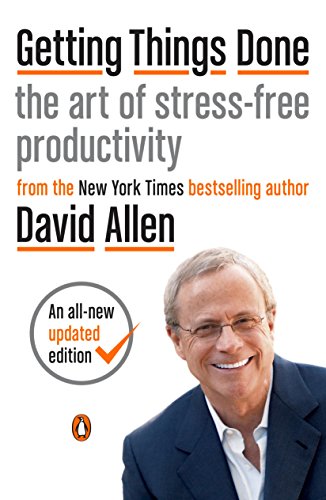

This article is an excerpt from the Shortform summary of "Getting Things Done" by David Allen. Shortform has the world's best summaries of books you should be reading.
Like this article? Sign up for a free trial here .
What is a vertical project, and how does it work? Can vertical project management help you achieve your goals?
A vertical project is a project plan that requires vertical thinking in order to make it happen. Some projects require more vertical project planning and thinking than others. These tips can help.
What Is Vertical Project Planning?
If you’ve worked through all the steps, you already have a healthy Projects list with next actions identified and support materials organized. However, even with the vertical project planning steps we talked about in Chapter 3, you might need to do some deeper vertical thinking for certain projects.
Review your Projects list and ask yourself these questions about each project:
- Is there more I need to know about this?
- Are there ideas or information I need to capture?
- What else do I need to remember about this project?
As you go through this process, jot down your thoughts in whatever form feels best—bullet points, an outline, or a mind map.
While many projects are straightforward and take just a few steps to complete (such as finding a new doctor), there are two types of projects that need more attention:
- Projects that are still on your mind after you’ve decided the next action
- Projects that inspire plans and ideas that pop up at random times
Let’s look at how to deal with each.
Types of Vertical Project Management
There is more than one type of project. Sometimes, some projects need more planning than others. Think about which type of project you have, and what management you’ll need.
Type #1: Projects That Need More Planning
If you’ve decided on a next action for a project but it’s still nagging at you, you probably need to do more planning.
For these projects, your next action will most likely take one of four forms:
- Brainstorming: If you need more ideas to get things moving on the project, the action item will be along the lines of “Draft ideas for Project X.” Decide how you’re going to brainstorm (refer to Chapter 3) and put the action on the appropriate list—possibly the “Computer Tasks” if you’re going to type up your ideas.
- Organizing: If you already have some notes or support materials that you need to sort and organize, your action item will be something like “Organize Project X notes.” Again, determine the context for this action and put it on the “Office,” “Computer Tasks,” or other appropriate action list.
- Setting up meetings: If you need input from other people involved to brainstorm or determine how to move forward, you’ll have to set up a meeting and your action item might be “email team” or “send meeting request.”
- Gathering information: If you need more information about how to move forward, decide how you’ll get that data (for example, talking to someone, reviewing documents, or doing online research) and create your action item accordingly.
Type #2: Capturing Random Thoughts
When you’re working on a big project like planning a conference or a vacation, you’ll get ideas at random times—when you’re making dinner, driving to pick up your kids from school, or watching TV. Don’t lose these ideas or let them float around your head taking up space.
Be diligent about capturing project ideas in any way you can, whether you jot them down on paper, make a note in a phone app, or text or email the idea to yourself. Then, make sure each one gets into your in-tray.
From there, if the idea is an action item then put it on the appropriate list. If it’s simply an idea you want to revisit later, put it with your project support materials or another logical location based on your organization system.
Stock the Right Tools
Vertical project management also means having the right tools. Having the right tools readily accessible facilitates—even inspires—your creative thinking.
In the paper-based physical world, you’ll want to have:
- Good writing tools—pens, pencils, or markers—at each location you’re likely to take notes (such as your office, your desk at home, and your briefcase)
- Loose-leaf paper (lined and/or graph) or notepads, preferably with perforated pages that can be ripped out and added to your in-tray
- A whiteboard and/or easel pad to give you a large space to brainstorm, especially if you’re working with others
- File folders to create a physical project file as soon as you have something to put in it
For digital planning and brainstorming, consider using:
- Word processing software
- Mind-mapping software
- Outlining software
- Presentation software
- Spreadsheet software
- Note-taking apps
- Additional computer screens to give you more space to brainstorm and organize (this gives you the same freedom as a whiteboard or easel pad)
Keep two caveats in mind when you use digital tools: First, make sure you’re comfortable using the software or app, so that you can focus more on your planning than the technology. Second, be as diligent about purging and updating your digital records as you are with your paper files; just because you have unlimited space to keep lots of documents and notes doesn’t mean that you should. Vertical project management doesn’t always mean you need the latest tools.
While digital devices offer ever-increasing options for planning and organizing, plus the benefit of being portable and easily accessible, you’ll probably still benefit from using a combination of paper and digital tools. Paper generally makes it easier to draw and write in a less structured format, which offers valuable freedom for creative thinking.
Vertical project planning can help you plan projects for the long term, and learn about different methods and ideas for vertical projects.

———End of Preview———
Like what you just read? Read the rest of the world's best summary of David Allen's "Getting Things Done" at Shortform .
Here's what you'll find in our full Getting Things Done summary :
- Why you're disorganized and your to-do list is a mess
- The simple workflow you can do everyday to be more productive than ever
- How to take complicated projects and simplify them






